2014 Review of the Year, Part IV: Reptiles and Amphibians
With consistent stable frost-free night time temperatures of above or around 5oC during mid-February, the amphibian season got off to an early start in 2014 for the YCN team and clients. Dan spent much of February staking out a number of sites along the River Hull watching Otters, while nearer home ponds were checked with Great Crested Newt recorded on 20th near Driffield, then later in the same evening at Filey Dams, initially with small numbers of males. Numbers of this species built up across the region's sites and peaked around mid-April, with an impressive count of 130 near Market Weighton.
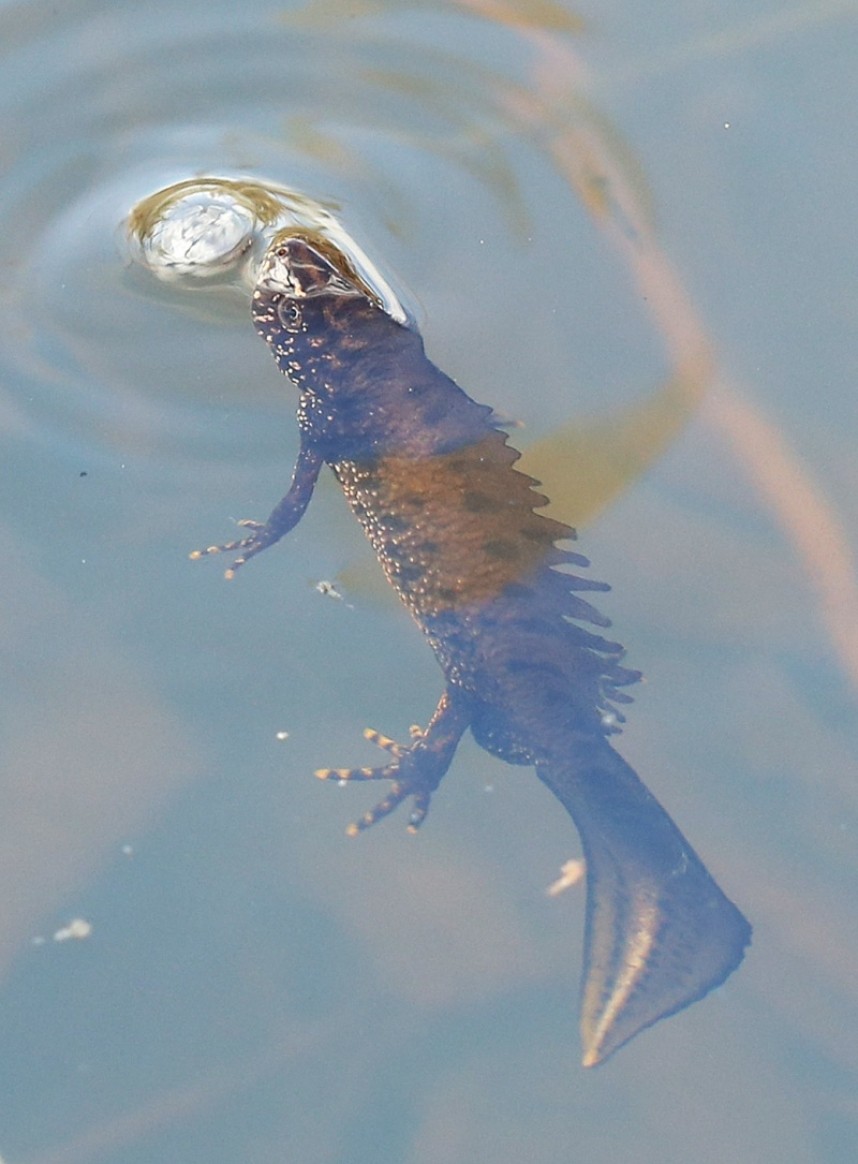
Great Crested Newt © Dan Lombard
The first reptile of the year was Adder, a species which we recorded on every single Forest Safari in the first half of the season before turning our attention to other species later in the season. The first Adders we found were our three reliable males at Harwood Dale on 28th February, which we have been watching for over five years now. Numbers peaked at 17 across three sites around early April before the females and young emerged. Close and prolonged views of males, females and young snoozing in the spring sunshine was, along with displaying Goshawk, the highlight of these early tours. During this time a fair number of clients saw this species for the first time in their lives. Adders appeared to have a fantastic breeding season with an abundance of young recorded well into September, along with adults as late as October.
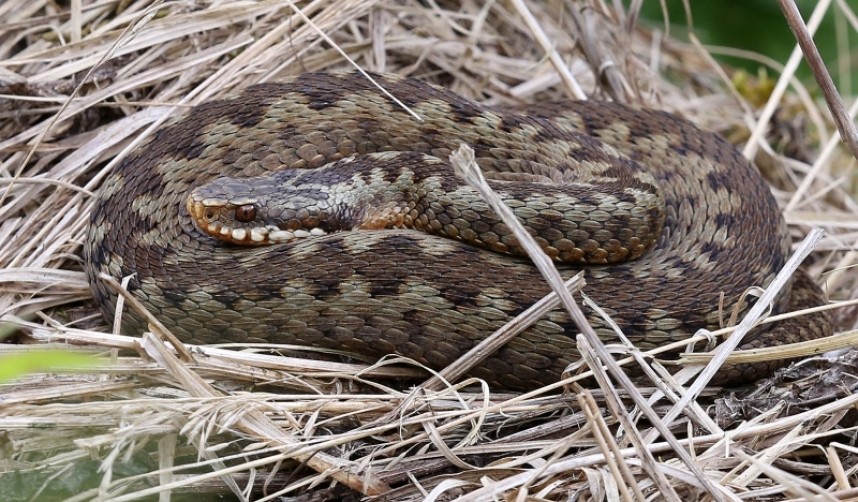
Adder © Dan Lombard
Into March, and the first Common Lizards, a species we normally record before Adder in most years, began to appear. Common Lizard numbers appeared to be around normal or slightly lower levels this year across most sites, with the first seen at Scar Wood on 3rd March. Numbers remained fairly consistent, with sightings on most tours in suitable habitat. Perhaps the highlight of the year for this species was finding a pale morph individual, a rare colour form not often recorded. This was in Dalby Forest, in what is a well-established wider colony.
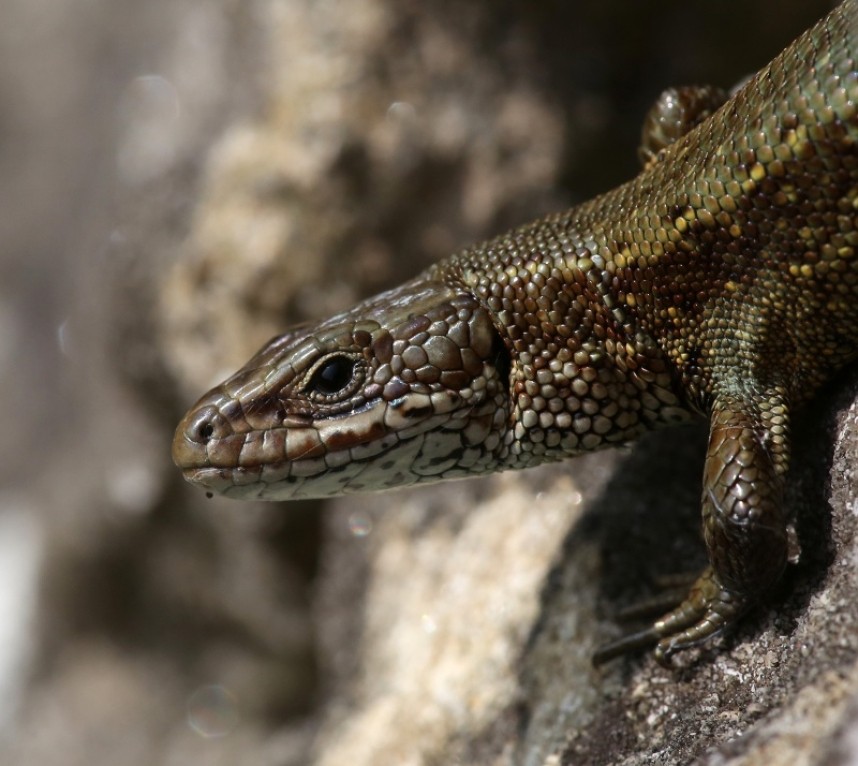
Common Lizard © Dan Lombard
The first two weeks of March were dominated by Common Frogs and Common Toads arriving en masse at ponds to mate. Our first Common Frog spawn was recorded on 5th March, with Common Toads not showing their usual distinction in laying time (normally later in this species), which led to a number of Common Frogs and Common Toads becoming confused and trying to mate with the wrong species! Spawn sightings showed a progression in date as altitude and latitude increased up onto the moors. Anecdotally both species appear to have had a good breeding season this year and an abundance of young of both species was recorded emerging from ponds from around June onwards . At the same time our fifth and sixth species of the year, Smooth Newt and Palmate Newt, also started to become active within ponds. On a number of tours clients had a fantastic opportunity to see both species at close quarters and learn the differences between them. A highlight was recording approximately 200 Palmate Newts at a site near Hovingham in North Yorkshire!
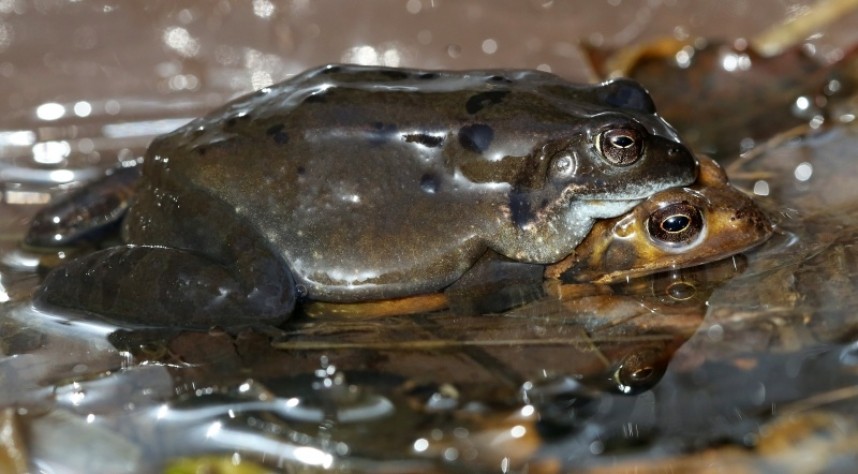
Common Frogs © Dan Lombard
It wasn't until April that the final three species were recorded; firstly Grass Snake, which was once again noted in good numbers around the River Hull, Market Weighton and York. Grass Snakes remain elusive within the North York Moors and clients mainly saw them on our Wolds tours. Our first sightings concerned a number of large females on 4th April, with a peak of 14 beside the River Hull in May. Our final sighting of the year was a sub-adult found in the middle of digesting its last prey item before hibernation on 25th September.
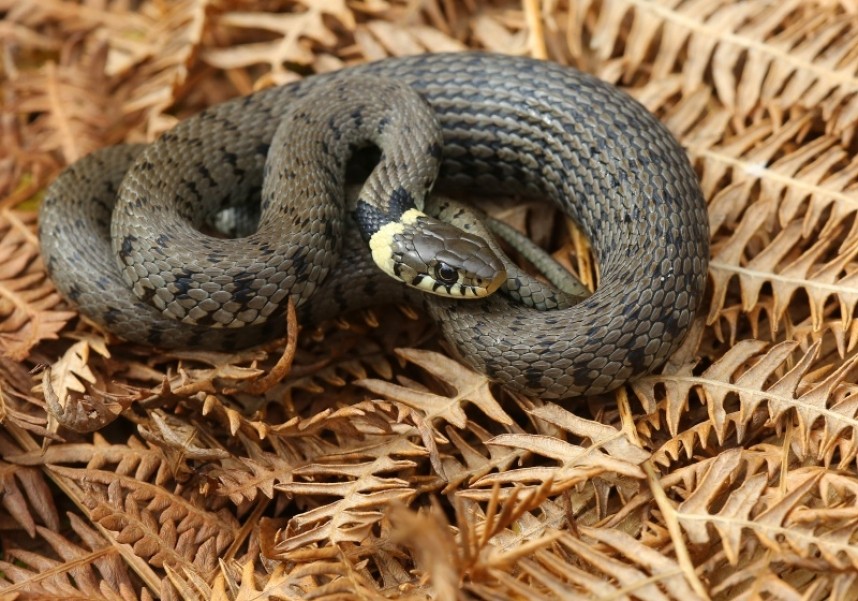
Grass Snake © Dan Lombard
Slow Worms are always a real highlight of tours for clients and this is a species with which we usually have a good success rate. 2014 was no different, with numbers increasing in the warmer weather of early April. We are fortunate to know a few reliable post-hibernation sites, where close-up views of what can be a shy and secretive creature are possible. On a number of tours Adder, Common Lizard and Slow Worm were all observed on the same morning.
Our final amphibians of the year were the ever-present Marsh Frogs of Tophill Low, which entertained clients watching for nocturnal wildlife such as bat species and Otters at the site with a great atmospheric chorus.
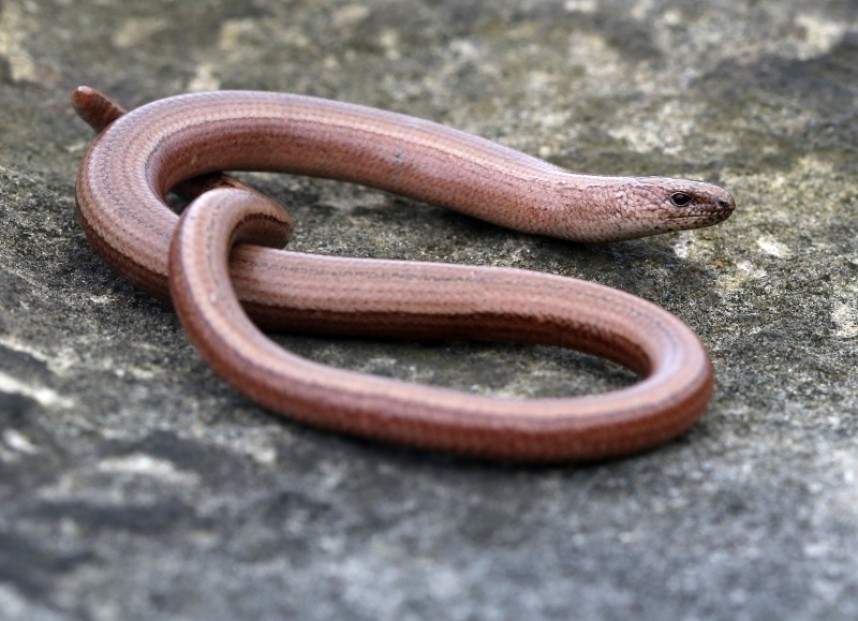
Slow Worm © Dan Lombard
This equated to a total of four reptile and six amphibian species, which, excluding introduced exotic species, constituted all the species which can be expected within the Yorkshire Coast region and in fact, over the past few years we have consistently achieved all ten species. We continued to observe most of them throughout 2014 until the animals entered hibernation, with the last species seen being a Common Frog on 23rd October at Filey. There was a notable reptile peak in September, as is often typical of our later tours, allowing views of Adder, Common Lizard and Slow Worm, in addition to Goshawk and Honey Buzzard in the morning before whales and sea birds in the afternoon!
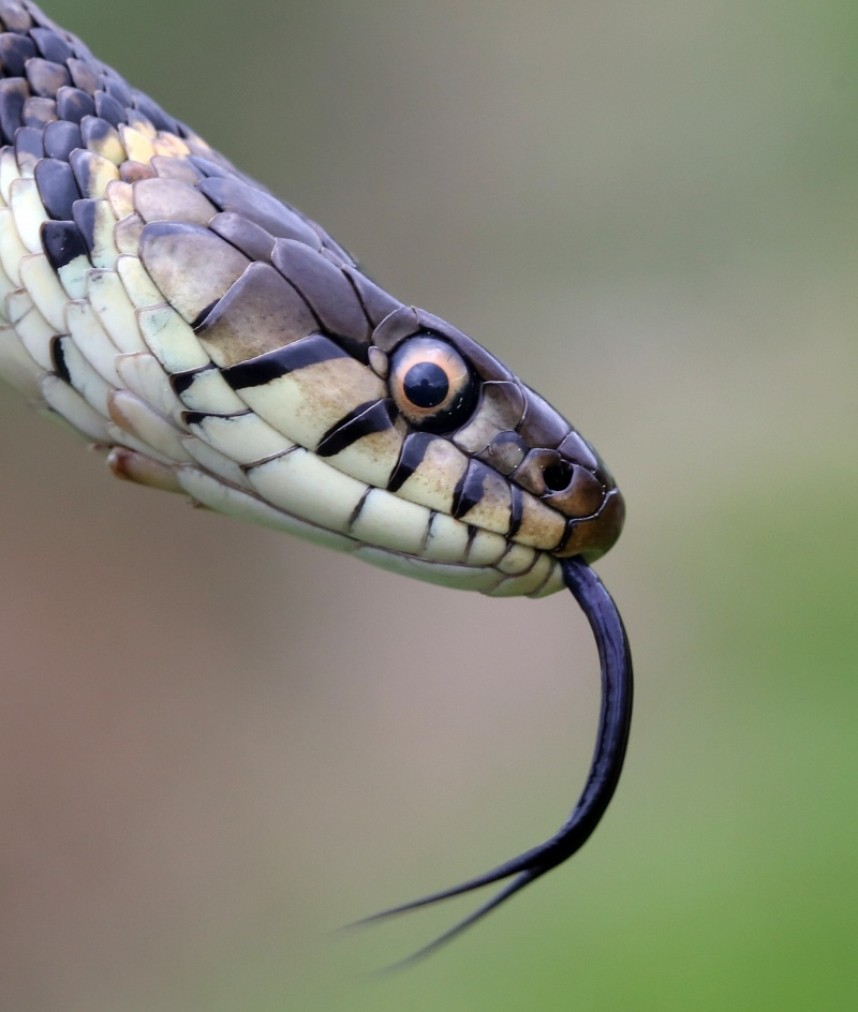
Grass Snake © Dan Lombard



 Back to Blog
Back to Blog
